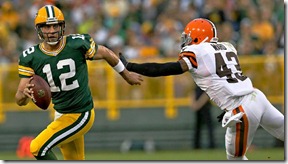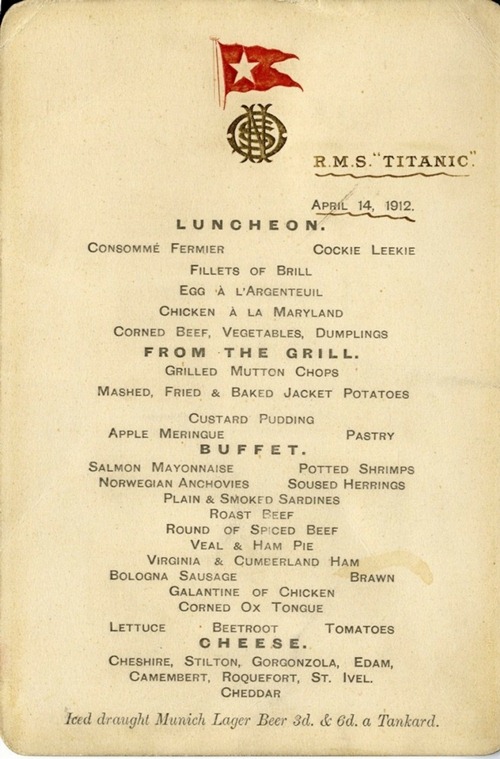Intermarkets' Privacy Policy
Support
Donate to Ace of Spades HQ!
Contact
Ace:aceofspadeshq at gee mail.com
Buck:
buck.throckmorton at protonmail.com
CBD:
cbd at cutjibnewsletter.com
joe mannix:
mannix2024 at proton.me
MisHum:
petmorons at gee mail.com
J.J. Sefton:
sefton at cutjibnewsletter.com
Recent Entries
Christmas Cookies Open Thread
Safe Travels Open Thread
Ghosts of Christmas Past Open Thread
Christmas Market Open Thread
Hep Jazzy Christmas Yule Log Open Thread
The Morning Rant
Mid-Morning Art Thread
The Morning Report — 12/25/25
Christmas Day Tech News 2025
Christmas Eve Open Thread - December 24, 2025 [Nativity Adjacent Rex]
Safe Travels Open Thread
Ghosts of Christmas Past Open Thread
Christmas Market Open Thread
Hep Jazzy Christmas Yule Log Open Thread
The Morning Rant
Mid-Morning Art Thread
The Morning Report — 12/25/25
Christmas Day Tech News 2025
Christmas Eve Open Thread - December 24, 2025 [Nativity Adjacent Rex]
Absent Friends
Jay Guevara 2025
Jim Sunk New Dawn 2025
Jewells45 2025
Bandersnatch 2024
GnuBreed 2024
Captain Hate 2023
moon_over_vermont 2023
westminsterdogshow 2023
Ann Wilson(Empire1) 2022
Dave In Texas 2022
Jesse in D.C. 2022
OregonMuse 2022
redc1c4 2021
Tami 2021
Chavez the Hugo 2020
Ibguy 2020
Rickl 2019
Joffen 2014
Jim Sunk New Dawn 2025
Jewells45 2025
Bandersnatch 2024
GnuBreed 2024
Captain Hate 2023
moon_over_vermont 2023
westminsterdogshow 2023
Ann Wilson(Empire1) 2022
Dave In Texas 2022
Jesse in D.C. 2022
OregonMuse 2022
redc1c4 2021
Tami 2021
Chavez the Hugo 2020
Ibguy 2020
Rickl 2019
Joffen 2014
AoSHQ Writers Group
A site for members of the Horde to post their stories seeking beta readers, editing help, brainstorming, and story ideas. Also to share links to potential publishing outlets, writing help sites, and videos posting tips to get published.
Contact OrangeEnt for info:
maildrop62 at proton dot me
maildrop62 at proton dot me
Cutting The Cord And Email Security
Moron Meet-Ups
TBD
« NFL Opener: Cowboys and Giants |
Main
| Top Headline Comments 9-6-12 »
September 05, 2012
Overnight Open Thread (9-5-2012)
Have a gazillion things going on so tonight's ONT will be minimal. Entertain yourselves as usual (but in a non-fapatory way please).
Also get yourself tested if you've been in the VI, MS, or DC.
Is Henri 2, Paw de Deux as voted at the Internet Cat Film Festival.
Here are four metrics that give a better idea of how strong a team is than the usual ones tossed out by sports analysts.
Football's Pythagorean Theorem
In a Sentence: Point differential is a better indicator of future winning percentage than winning percentage itself.
How It Works: Created by Bill James for baseball and modified for football in the early '90s by current Houston Rockets general manager Daryl Morey, the Pythagorean theorem (or "Pythagorean expectation") is a formula that translates a team's points scored and allowed into an "expected" winning percentage. That formula isn't exactly for the faint of heart:
Points For2.37 / (Points For2.37 + Points Against2.37)
As an example, let's take the 2011 Chiefs, who went 7-9 while scoring 212 points and allowing 338. Our formula is 2122.37 / (2122.37 + 3382.37) = 0.248. That's the Chiefs' expected winning percentage from their point differential, and if we multiply it by 16 games, we get a total of just 4.0 wins. The Pythagorean theorem suggests that the Chiefs outperformed their true level of performance by three full wins.
Teh Tweet!
Yahoo group. That is all.
Tonight's post brought to you by menus:
I'll have the cockie leekie, brill and some brawn along with a tankard of lager please.
Notice: Posted by permission of AceCorp LLC. Please e-mail overnight open thread tips to maetenloch at gmail. Otherwise send tips to Ace.
Recent Comments
Tom Servo:
"Internet bon mottes aren’t the place for dee ..."
CaliGirl: " Sorry I suck. Posted by: OGCA at December 25, 2 ..."
Captain Obvious, Laird o' the Sea: "Need a few blond lesbian jokes. Posted by: tubal ..."
Dash my lace wigs!: "87 I believe I’ll have a ham sandwich or som ..."
mindful webworker - jelly baby?: "Christmas message from the one and only Real Docto ..."
tubal: "Need a few blond lesbian jokes. ..."
Eromero: "I believe I’ll have a ham sandwich or some c ..."
mikeski: "[i]lesbian blonds on Christmas? Posted by: Sooth ..."
PaleRider: "Oh and OGCA I totally get the "if not for the kitt ..."
Dash my lace wigs!: "Pale Rider, I didn't manage to send a single card ..."
Soothsayer : " lesbian blonds on Christmas? ..."
tubal: "67 Bible verses on forgiveness: https://tinyurl ..."
CaliGirl: " Sorry I suck. Posted by: OGCA at December 25, 2 ..."
Captain Obvious, Laird o' the Sea: "Need a few blond lesbian jokes. Posted by: tubal ..."
Dash my lace wigs!: "87 I believe I’ll have a ham sandwich or som ..."
mindful webworker - jelly baby?: "Christmas message from the one and only Real Docto ..."
tubal: "Need a few blond lesbian jokes. ..."
Eromero: "I believe I’ll have a ham sandwich or some c ..."
mikeski: "[i]lesbian blonds on Christmas? Posted by: Sooth ..."
PaleRider: "Oh and OGCA I totally get the "if not for the kitt ..."
Dash my lace wigs!: "Pale Rider, I didn't manage to send a single card ..."
Soothsayer : " lesbian blonds on Christmas? ..."
tubal: "67 Bible verses on forgiveness: https://tinyurl ..."
Recent Entries
Christmas Cookies Open Thread
Safe Travels Open Thread
Ghosts of Christmas Past Open Thread
Christmas Market Open Thread
Hep Jazzy Christmas Yule Log Open Thread
The Morning Rant
Mid-Morning Art Thread
The Morning Report — 12/25/25
Christmas Day Tech News 2025
Christmas Eve Open Thread - December 24, 2025 [Nativity Adjacent Rex]
Safe Travels Open Thread
Ghosts of Christmas Past Open Thread
Christmas Market Open Thread
Hep Jazzy Christmas Yule Log Open Thread
The Morning Rant
Mid-Morning Art Thread
The Morning Report — 12/25/25
Christmas Day Tech News 2025
Christmas Eve Open Thread - December 24, 2025 [Nativity Adjacent Rex]
Search
Polls! Polls! Polls!
Frequently Asked Questions
The (Almost) Complete Paul Anka Integrity Kick
Primary Document: The Audio
Paul Anka Haiku Contest Announcement
Integrity SAT's: Entrance Exam for Paul Anka's Band
AllahPundit's Paul Anka 45's Collection
AnkaPundit: Paul Anka Takes Over the Site for a Weekend (Continues through to Monday's postings)
George Bush Slices Don Rumsfeld Like an F*ckin' Hammer
Paul Anka Haiku Contest Announcement
Integrity SAT's: Entrance Exam for Paul Anka's Band
AllahPundit's Paul Anka 45's Collection
AnkaPundit: Paul Anka Takes Over the Site for a Weekend (Continues through to Monday's postings)
George Bush Slices Don Rumsfeld Like an F*ckin' Hammer
Top Top Tens
Democratic Forays into Erotica
New Shows On Gore's DNC/MTV Network
Nicknames for Potatoes, By People Who Really Hate Potatoes
Star Wars Euphemisms for Self-Abuse
Signs You're at an Iraqi "Wedding Party"
Signs Your Clown Has Gone Bad
Signs That You, Geroge Michael, Should Probably Just Give It Up
Signs of Hip-Hop Influence on John Kerry
NYT Headlines Spinning Bush's Jobs Boom
Things People Are More Likely to Say Than "Did You Hear What Al Franken Said Yesterday?"
Signs that Paul Krugman Has Lost His Frickin' Mind
All-Time Best NBA Players, According to Senator Robert Byrd
Other Bad Things About the Jews, According to the Koran
Signs That David Letterman Just Doesn't Care Anymore
Examples of Bob Kerrey's Insufferable Racial Jackassery
Signs Andy Rooney Is Going Senile
Other Judgments Dick Clarke Made About Condi Rice Based on Her Appearance
Collective Names for Groups of People
John Kerry's Other Vietnam Super-Pets
Cool Things About the XM8 Assault Rifle
Media-Approved Facts About the Democrat Spy
Changes to Make Christianity More "Inclusive"
Secret John Kerry Senatorial Accomplishments
John Edwards Campaign Excuses
John Kerry Pick-Up Lines
Changes Liberal Senator George Michell Will Make at Disney
Torments in Dog-Hell
Greatest Hitjobs
The Ace of Spades HQ Sex-for-Money Skankathon
A D&D Guide to the Democratic Candidates
Margaret Cho: Just Not Funny
More Margaret Cho Abuse
Margaret Cho: Still Not Funny
Iraqi Prisoner Claims He Was Raped... By Woman
Wonkette Announces "Morning Zoo" Format
John Kerry's "Plan" Causes Surrender of Moqtada al-Sadr's Militia
World Muslim Leaders Apologize for Nick Berg's Beheading
Michael Moore Goes on Lunchtime Manhattan Death-Spree
Milestone: Oliver Willis Posts 400th "Fake News Article" Referencing Britney Spears
Liberal Economists Rue a "New Decade of Greed"
Artificial Insouciance: Maureen Dowd's Word Processor Revolts Against Her Numbing Imbecility
Intelligence Officials Eye Blogs for Tips
They Done Found Us Out, Cletus: Intrepid Internet Detective Figures Out Our Master Plan
Shock: Josh Marshall Almost Mentions Sarin Discovery in Iraq
Leather-Clad Biker Freaks Terrorize Australian Town
When Clinton Was President, Torture Was Cool
What Wonkette Means When She Explains What Tina Brown Means
Wonkette's Stand-Up Act
Wankette HQ Gay-Rumors Du Jour
Here's What's Bugging Me: Goose and Slider
My Own Micah Wright Style Confession of Dishonesty
Outraged "Conservatives" React to the FMA
An On-Line Impression of Dennis Miller Having Sex with a Kodiak Bear
The Story the Rightwing Media Refuses to Report!
Our Lunch with David "Glengarry Glen Ross" Mamet
The House of Love: Paul Krugman
A Michael Moore Mystery (TM)
The Dowd-O-Matic!
Liberal Consistency and Other Myths
Kepler's Laws of Liberal Media Bias
John Kerry-- The Splunge! Candidate
"Divisive" Politics & "Attacks on Patriotism" (very long)
The Donkey ("The Raven" parody)




